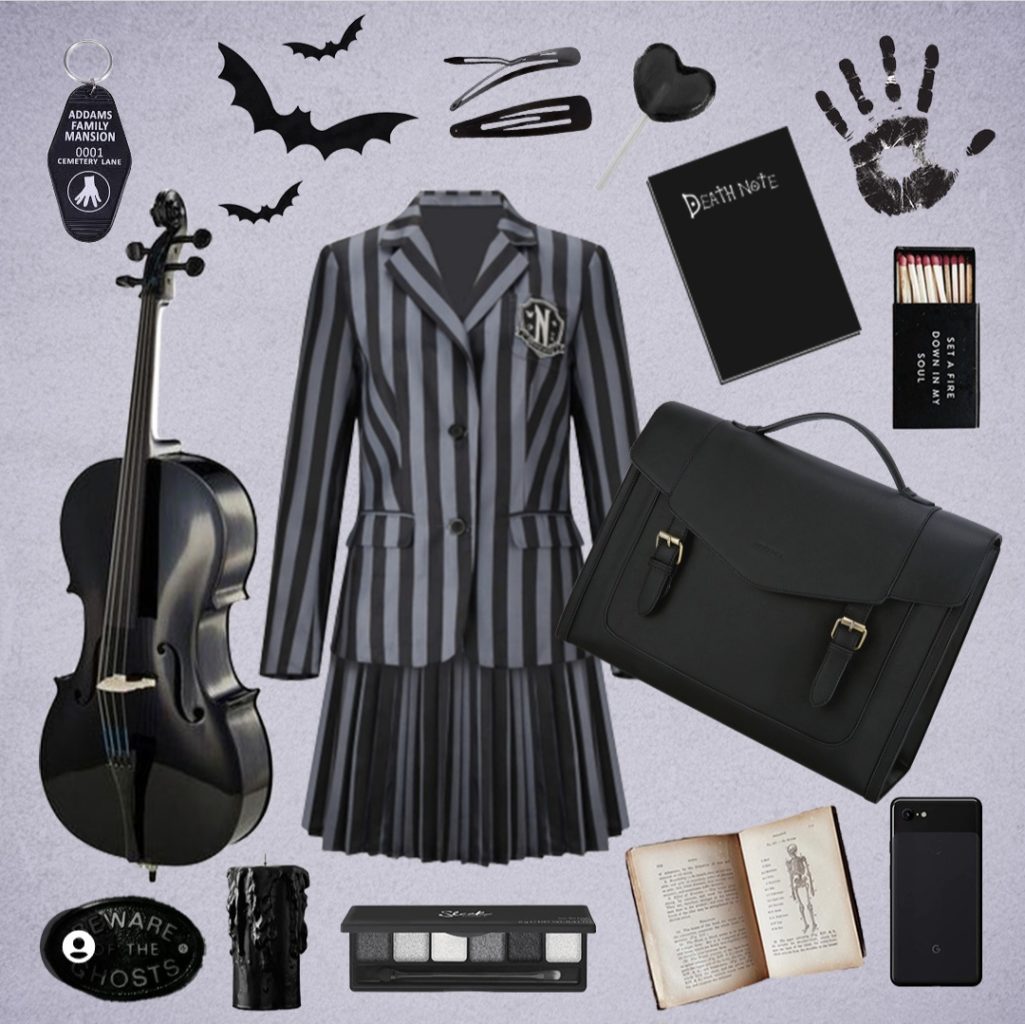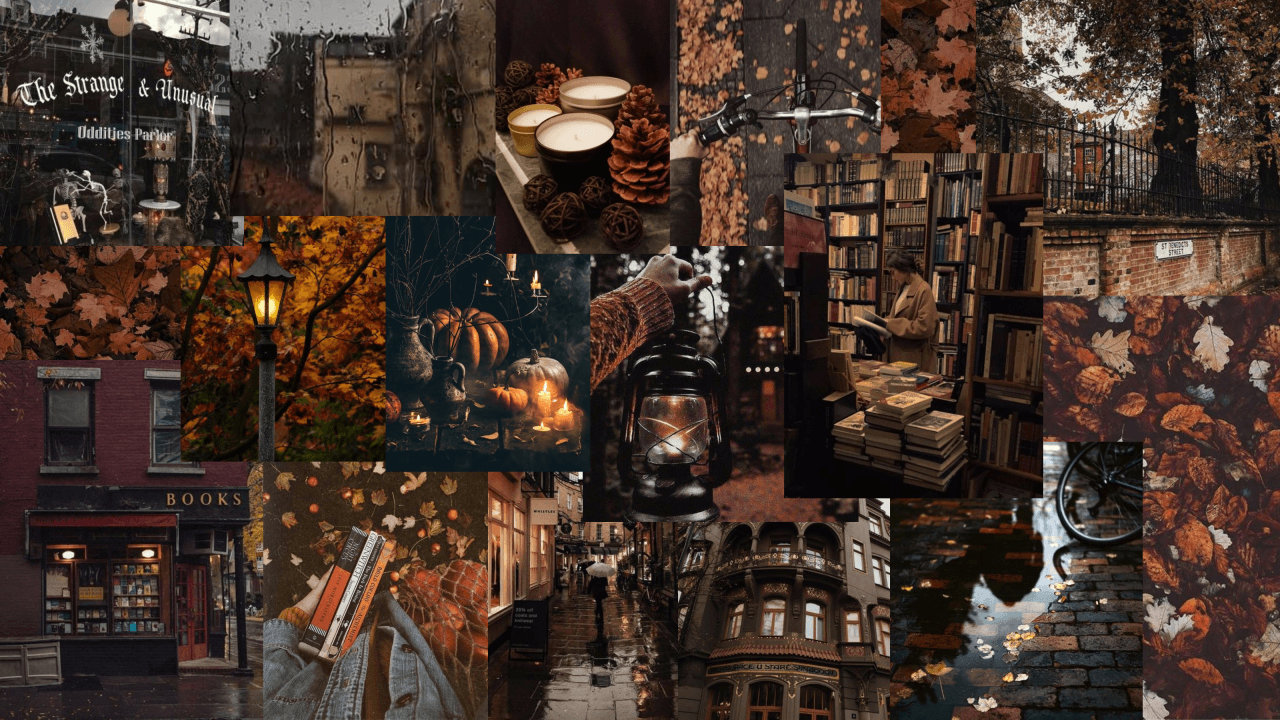Get ready to deep dive into Dark Academia, the aesthetic known for gothic style and tweed blazers. Class is officially in session…
The phrase ‘Dark Academia’ first appeared as a tag on Tumblr in 2015. The term was originally used in reference to, The Secret History (1992), by novelist Donna Tartt. The book tells the tale of a group of friends who attend an elite New England university; under the influence of their Classics professor they discover a new way of thinking and living. As the book goes on, themes of murder and addiction are revealed. It has been said the story partially draws inspiration from the 5th-century BC Greek tragedy, The Bacchae, by Euripides.
This initial introduction was more of an online book club, with contributors sharing asks and reblogs to discuss the work itself. While themes of the novel are still incremental to the essence of Dark Academia, it wasn’t until other fandoms adopted the phrase that the movement became more prominent and aesthetically driven.
Films like Harry Potter were incredibly popular at the time; with many Hogwarts scenes filmed at Oxford University, the series heavily contributed to the romanticization of the boarding school setting. The films provided visually whimsical content ideal for kickstarting an internet subculture, with many creators taking their own spin on Dark Academia fashion and photography content.
“No matter what anybody tells you, words and ideas can change the world”
— 🕰 (@_DarkAcademia) December 20, 2022
──Dead Poets Society, 1989. pic.twitter.com/80Jqh3g7Mt
Any self proclaimed Dark Academic would post or reblog from art history pages, with a focus on architecture and quotes from classic literature. There was a heavy emphasis on reading and academic life, with online discussion just as important as dark photos of leather-bound books.
In modern-day, this is a lifestyle movement based on aspirational ideologies. For many who follow it, the Dark Academia aesthetic has bled into every day life; from the university they attend to opulent household decor.
Today #DarkAcademia has amassed 3.5 billion views on TikTok and 1.9 million posts on Instagram.
Dark Academia in Pop Culture
Although Dark Academia’s title only appeared in the mid-2010s, this style has been prevalent for centuries. Romantic-era intellectuals and writers such as Percy Shelley, Lord Byron, Mary Shelley and Edmund Burke are known to be of great influence. Elitism, emotion and tragedy are continually shown throughout their works and in their lives; these are themes greatly associated with the aesthetic.
Oscar Wilde’s, The Picture of Dorian Gray, is another prime example; a wealthy protagonist, consumed with philosophical thinking and pursuing a life of hedonism, ultimately leading to his downfall. It seems as though intelligent creatives with troubled souls are the greatest muse in this movement, especially combined with tales of mystery and debauchery.

Wilde was a spokesperson for Aestheticism; a movement known for the phrase, ‘art of art’s sake’, this took away from the Victorian belief that art and literature should be a moral compass of how to act, rather it is there to be enjoyed. There was a massive focus on form, beauty, sensuality and pleasure. It is interesting that these are the same topics that seem to plague the characters in Dark Academia writing to this day.
Writers like Oscar Wilde have influenced musicians throughout the decades; in particular the `80s saw bands such as The Smiths and Joy Division placing great musical importance on their lyrics. This was a time when writing songs with dark, literary themes was hugely popular. Although these bands placed little importance on wealth and status, it cannot be denied the moody vibe, intellectual lyrics and formal dress fit incredibly well with this movement.
This viral post by Tumblr user holocene-days lists three canonical Dark Academia movies and books:
“The holy trinity of Dark Academia that is Kill your Darlings, Dead Poets Society, and The Secret History.” – @holecene-days
Today, the Dark Academia style has certainly hit its peak in television. Shows such as The Umbrella Academy, A Series of Unfortunate Events, The Queen’s Gambit and Wednesday have all been widely popular, creating their own following and inspiring many social media trends.

There is something so alluring about loveable misfits creating their own communities and taking on larger issues; especially surrounded by dreamily dark settings and grandiose architecture.
Fashion – Blazers, Plaid Skirts & Turtlenecks
The key to dressing in this style is combining prep school fashion with a dark and neutral colour palette. The stand out prints include plaid and argyle, often featuring subtle symbols of witchcraft such as celestial imagery and plants. Think Wednesday Adams in Wednesday, or Sabrina Spellman in The Chilling Adventures of Sabrina.
Remembering to layer is very important as this style feels most at home in an autumnal setting. Think sweater vests, cardigans, collared shirts, vintage tweed pants and tights. A typical outfit would consist of a plaid skirt with knee high socks, an ivy league sweater, and worn leather loafers.
Here TikTok user @cosyacademia lists some Dark Academia staples:
@cosyacademia dark academia wardrobe 💼 #darkacademia #darkacademiaaesthetic #darkacademiaoutfits #darkacademiafashion #darkacademiastyle ♬ original sound – mianne.chan
Decor – Books, Skulls & Apothecary Jars
While this aesthetic is largely based in an academic setting, it doesn’t mean you can’t create a Dark Academia setting at home. Essentials include rich textures and ornate antique furniture; imagine creating your very own dimly lit library to brood and create in.
Think flickering candles and stacks of books – don’t forget a large oak desk strewn with handwritten notes. Apothecary jars are a great way to collect specimens, while skulls and skeletons may be on display for study.
Educational pieces such as globes, telescopes and anatomical drawings will also feel at home.
Here @Poeandpoets shares some helpful ideas to create your own space:
@poeandpoets There should be two pictures for the statues and now it’s so frustrating that it’s not there </3 #fyp #fypシ #academia #booktok #aesthetic #darkacademia #reader #books #vintage #foryou #book #decoration #bedroomdesign #room #idea #pinterest #decor ♬ Dealer – Lana Del Rey
Why the Rise in Popularity?
In 2022, Dark Academia continues to rise in popularity; even leading to spin-off aesthetics such as Light Academia, Chaotic Academia and Romantic Academia. Could it be the allure of building a secret society? Or the adorable preppy style with an edgier, much darker twist?
It has been suggested that the Covid-19 pandemic lead students to romanticize the university experience. Many people were working from home in inadequate spaces, being unable to attend in person may have created a longing for an experience that was taken away.
The perfect Dark Academia day at Cambridge. pic.twitter.com/Hl85HK3EQl
— Nostalgic Academia (@NostAcademia) September 19, 2022
It could also be a direct response to the realities of neoliberal schooling and cuts in university funding. Many are unable to attend due to financial difficulties, and many that do miss out on vital experiences due to having to work multiple part-time jobs alongside studying.
Writing for Honi Soit, Ezara Norton states, “The adoption of neoliberal models in universities prioritises profit and seeks to churn out job-ready graduates who can contribute to economic growth – nevermind being centres of knowledge for self-enrichment or fulfilment”.
With this in mind, it is no wonder the youth of today are seeking out an escapist sub-culture focussed on learning to simply broaden the mind and light internal passions.
“the steady blossoming of dark academia in the student imagination reveals a deep disillusionment with these models, and a longing for a space free to learn unencumbered by a neoliberal agenda.”
– Ezara Norton
As with any lifestyle aesthetic, Dark Academia fans are drawn to a group of likeminded individuals, specifically those who don’t feel a need to follow the status quo. With mental illness at an all time high, and life online with the potential to be so damaging, it makes sense that a group based on troubled but talented protagonists and fantastical settings would be so appealing.
It is also notable that this movement includes many LGBTQIA+ icons from both past and present; such as Achilles and Patroclus, Sappho, Oscar Wilde, and Virginia Woolf. A community that has been neglected throughout history and are finally being celebrated more and more every day.
It has been suggested that Dark Academia provides an outlet for people who don’t necessarily fit the stereotypical expectation of ‘camp’, rather introversion is celebrated while being able to remain in an accepting and safe online space.
The Problem with Dark Academia
While Dark Academia has created a safe space for many, it has also been criticised due to Eurocentrism, a lack of diversity, and glorification of private schooling and the upper class.
“I think the worrying thing is that Dark Academia revolves around symbols of whiteness, economic and cultural privilege, conservatism and nationalism,” says Dr Sarah Burton who presented a lecture on the trend. “It’s distinctly traditional and British in character,” she says. “If there isn’t a clear level of critique in this sort of aesthetic it ends up just as a reiteration of the status quo and ruling class power.”
This issue has not gone unnoticed in recent years, there have been a surge of Dark Academia books written as a direct rebuttal to the romanticization of academics.
For example, Ace of Spades, by Faridah Àbíké-Íyímídé, follows the only two Black students in an elite school being targeted by, an anonymous texter who seems to be driven by a racist system. There is also The Ivies, written by Alexa Donne, this book seems to take inspiration from the 2019 college admissions bribery scandal.

Writing for Book Riot, Adiba Jaigirdar states, “Books like these are not using academics as a backdrop for the mystery or murder at the heart of the story, but as a way to explore the seedy underbelly of academia itself.”
With authors already in the circle actively changing themes through their work, it is hopeful these issues will continue to be discussed and lasting barriers will be broken down.

